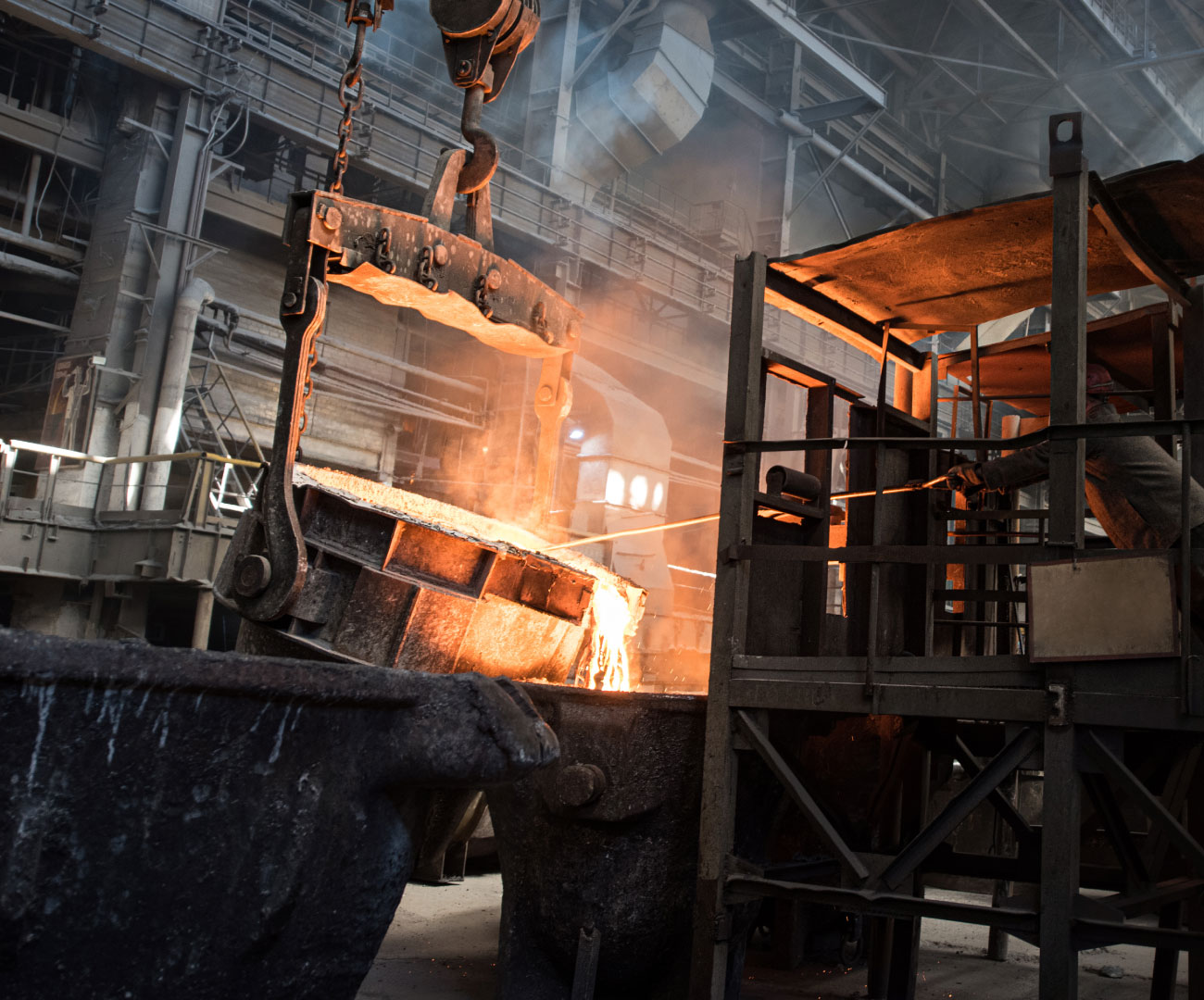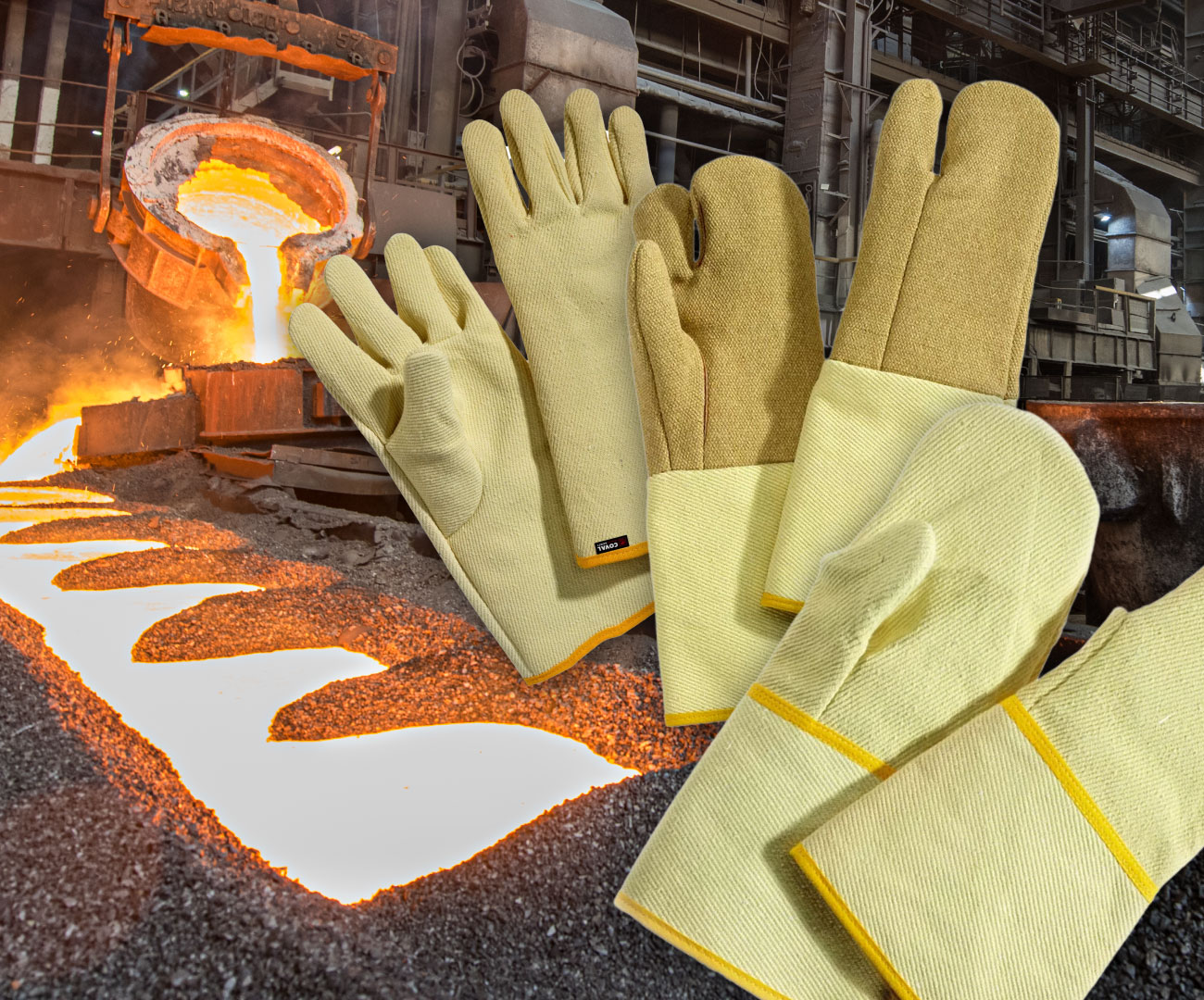Safety in post-melting foundries: main risks and effective solutions for operator protection


The post-melting process in foundries is a crucial phase, not only for the quality of the final product, but also for the safety of the operators involved. However, the risks are not limited to this phase: the entire production cycle presents numerous critical issues that should not be underestimated. We discuss this in detail in our dedicated blog post: “What are the most at-risk roles in the foundry?”.
To go into more detail, the post-fusion phase includes complex operations such as machining, heat treatment, finishing and the application of coatings. Activities often exposed to specific dangers, sometimes not immediately visible. Recognizing these risks and equipping yourself with the correct Personal Protective Equipment (PPE) is essential to building a safe, efficient and compliant work environment.
The main risks after the melting process
 During the finishing and post-casting processing phase, operators are exposed to a variety of risks that must be managed carefully and with adequate protective equipment:
During the finishing and post-casting processing phase, operators are exposed to a variety of risks that must be managed carefully and with adequate protective equipment:
1. Exposure to heat: Handling hot castings and proximity to high-temperature surfaces make thermal risks one of the most common. Depending on the activity (grinding, welding, polishing, etc.), it is necessary to choose specific PPE, such as gloves resistant to contact heat or radiant heat.
2. Impact and abrasion risks: Mechanical finishing operations, such as grinding, can cause impacts, scratches and abrasions. These dangers are amplified in environments with the presence of metal scraps and uneven surfaces.
3. Respiratory hazards: Often overlooked, respiratory risks are related to silica dust, metal fumes, toxic vapors and paint residues. Prolonged inhalation of these substances can lead to serious pathologies such as silicosis, occupational asthma and chronic lung diseases.
Protective Devices: What You Really Need
 Thermal protection in the foundry requires cut-resistant and heat-resistant gloves, specifically for high temperatures, with a good degree of resistance to mechanical risks. If you want to know more, we talk about it in our dedicated blog post: PPE and heat-resistant gloves with high cut resistance.
Thermal protection in the foundry requires cut-resistant and heat-resistant gloves, specifically for high temperatures, with a good degree of resistance to mechanical risks. If you want to know more, we talk about it in our dedicated blog post: PPE and heat-resistant gloves with high cut resistance.
Generally speaking, aramid gloves are ideal for environments where the threshold of 250°C is easily exceeded, offering an effective barrier up to 1000°C. For activities that require more flexibility, such as welding or finishing, leather gloves with aluminized inserts can be used for protection from radiant heat.
The technological evolution of materials has also made it possible to combine heat resistance and cut protection, maintaining high dexterity even in complex working conditions.
Coval Safety's answer: total protection with the HEAT line
To ensure safety and comfort in high-temperature environments, Coval Safety offers the HEAT line, specialized in protection from radiant and contact heat.
The line includes professional heat-resistant gloves and clothing, ideal for foundries, steelworks, glass industry and metalworking.
Products in the HEAT line include:
- S5TK Aramid Fabric Gloves, ideal for the safe handling of hot objects in foundries and metalworking. Made of double layer of aramid, they offer high resistance to both contact heat and mechanical risks.
- Heat resistant gloves in aramidic fabric F2AGP/18TK, designed for high temperature environments, in the presence of melting or hot surfaces. The multi-layer insulating structure reduces heat transmission, offering reliable protection in case of prolonged contact with hot objects.
- Prowear D3E3 jacket and trousers, made of intrinsically flame-retardant fabric, maintain protection even after numerous washes. They offer high thermal insulation and resistance to molten metal splashes (aluminium and iron). Certified according to ISO 11612:2015 A1 B1 C1 D3 E3 F1, they are essential PPE for foundries, steelworks and metallurgical plants.
All products in the HEAT line are certified according to European regulations and designed in collaboration with industry operators to ensure maximum reliability in the field.
To choose the solution best suited to your work environment:



